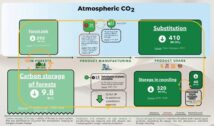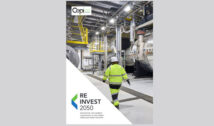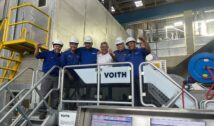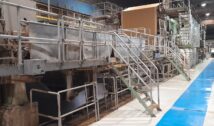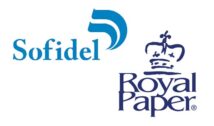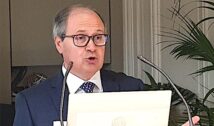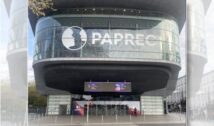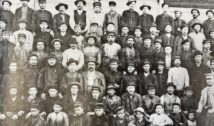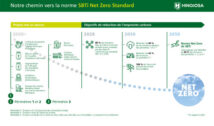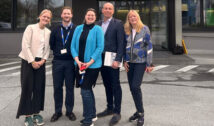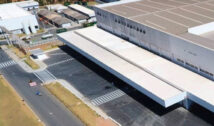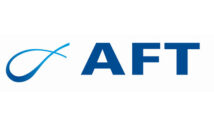
Commenting on the group’s results, Sappi Chief Executive Officer Steve Binnie said: “I am very pleased with Sappi’s strong recovery and our return to profitability for the year. I wish to recognise the dedication and resilience of the Sappi team in turning a loss of US$135 million
in 2020 into a profit of US$13 million for 2021, with EBITDA increasing by 40% over the prior year. The team overcame significant challenges posed by Covid-19. The cooperation, cross-regional support and continued focus on our Thrive25 strategy was exemplary.
Highlights for the year included the recovery in the profitability of the dissolving pulp (DP) segment driven by buoyant demand and significantly better market prices as well as the North American region delivering its highest financial year EBITDA in over a decade. Our strategy of making investments in packaging and speciality papers reaped rewards as the segment achieved record profitability and sales volumes increased by 21%.”
Throughout this unprecedented time the health and safety of our employees remained paramount. A comprehensive Covid-19 action plan enabled us to operate in a safe and uninterrupted manner where demand permitted. Working closely with our customers and suppliers we systematically increased activity and output in response to improved market demand and our support for local communities helped mitigate the impact of the pandemic and the ensuing socio-economic consequences on them.
As Covid-19 lockdowns eased and economic activity resumed, global trade rebounded much faster than initially anticipated. The requirement for shipping surged which triggered vessel and container shortages, severe port congestion and significant freight rate increases. The logistical disruptions described above severely constrained our export sales in all regions. By year-end, this resulted in a backlog of deliveries of 100,000 tons of DP. The impact on earnings from this backlog amounted to approximately US$30 million. Furthermore, high demand for
raw materials and commodities, coupled with long lead times and an inability to restock inventories, fuelled worldwide inflationary pressures. Consequently, escalating delivery and raw material costs, particularly purchased pulp, chemicals and energy, negatively impacted
margins in all product segments. To mitigate the impact of these rising costs we implemented a series of price increases in our paper businesses.
While market conditions improved, the focus was maintained on the preservation of liquidity and prudent cash management. Strategic actions were re-prioritised while variable and fixed costs continue to be reviewed. The project to expand the Saiccor Mill capacity was impacted negatively by Covid-19 lockdowns and associated travel restrictions, which delayed the project schedule. Commissioning of the plant began during the fourth quarter and will be completed in the first quarter of the 2022 financial year.
Turning to the financial results for the quarter, Binnie said: “The ongoing recovery from Covid-19 continued in the fourth quarter. High DP prices and an excellent performance by the North American business more than offset escalating raw material costs and ongoing supply
chain challenges, which constrained shipments and negatively impacted delivery costs. The South African civil unrest, coupled with supply chain challenges, including a cyber-attack and equipment failure at the Durban port, along with adverse weather events, had a negative
impact on fourth quarter EBITDA. Notwithstanding this, group EBITDA increased by 22% to US$177 million from the US$145 million achieved in the third quarter.”
Looking forward, Binnie stated: “We remain encouraged by the growing resilience of global economies as the Covid-19 pandemic evolves and the corresponding recovery in underlying demand in all of our product segments. However, the supply chain challenges, and the
extraordinary energy cost inflation may affect profitability. In addition, the maintenance shut at Somerset Mill is scheduled for the first quarter and will impact EBTDA. As a result, we anticipate an improvement in EBITDA in the first quarter of FY2022 relative to the fourth quarter of FY2021.”
Financial summary for the quarter and full year
• EBITDA excluding special items
o For the quarter US$177 million (Q4 FY20 US$82 million)
o For the year US$532 million (FY20 US$378 million)
• Profit for the period
o For the quarter US$35 million (Q4 FY20 loss of US$88 million)
o For the year US$13 million (FY20 loss of US$135 million)
• EPS excluding special items
o For the quarter 11 US cents (Q4 FY20 loss of 4 US cents)
o For the year 15 US cents (FY20 loss of 5 US cents)
• Net debt US$1,946 million (FY20 US$1,957 million)
Viscose staple fibre (VSF) prices dropped during the quarter due to higher inventory levels and a delay in the seasonal upswing in demand ahead of the Chinese National Holidays in September. Despite the lower sales volumes compared to the prior quarter, the EBITDA for
the segment increased by 38% due to beneficial pricing which peaked in the third quarter and formed the basis of fourth quarter contract prices.
Sales volumes in the packaging and speciality papers segment increased 10% compared to the equivalent quarter in the prior year as the North America business experienced encouraging sales growth and margin improvement across all of the major product categories.
Growth in European packaging and specialities sales volumes was hampered by weaker demand for certain non-essential luxury product categories and prolonged speciality paper qualifications. Containerboard demand in South Africa was robust on the back of strong fruit
exports. EBITDA for the segment improved 21% compared to last year.
Graphic paper demand continued to recover and, combined with industry capacity closures, ensured the market balance in Europe and North America was restored to healthy levels. However, profitability in Europe remained a challenge due to inflationary cost pressures. Low
industry inventory levels and longer delivery lead times linked to the global supply chain challenges provided support for price increases during the quarter.
Earnings per share excluding special items for the quarter was 11 US cents, which was a substantial improvement on the 5 US cents in the prior quarter and indicative of the recovery of profitability for the group.
Net cash generated for the quarter was US$33 million, compared to US$88 million in the equivalent quarter last year. The decrease was primarily as a result of increased capital expenditure of US$143 million related mainly to the expansion of DP capacity at Saiccor Mill.
Outlook
Overall market conditions for DP continue to be strong. However, short-term demand in China is impacted by the recent implementation of energy savings regulations which impose curtailments for energy intensive manufacturing operations across the country. The textile
value chain has been negatively impacted thereby reducing VSF production and DP demand. Consequently, DP market prices dropped to US$940 per ton in October. However, lower VSF supply and a widening price differential to cotton fuelled a significant rise in VSF pricing, which should be positive for DP pricing. Sappi’s sales volumes are not expected to be impacted by the weaker Chinese DP demand.
The recovery of demand for graphic paper combined with industry capacity closures has tightened the market balance. In North America, restrictions on imports due to global supply chain disruptions have further contributed to a positive environment in this region. The
underlying demand in the packaging and speciality papers segment remains robust in both the North American and South African regions and opportunities for further growth in sales volumes exist in Europe. The scheduled Somerset Mill annual maintenance shut, which
includes a 7-year cold outage, will have an estimated US$22 million impact on profitability in the first quarter.
Recent spikes in global energy prices for gas, power and coal are anticipated to have an adverse impact on our first quarter results, principally in Europe. To offset rising costs, we have announced selling price increases across all paper grades. In addition, energy specific
surcharges have been implemented for all European shipments from 25 October 2021.
Global logistical challenges and vessel shortages are expected to continue through FY2022, which may have an ongoing negative impact on our export sales. It is unlikely that any improvement in supply chain reliability will be realised in the first quarter and hence the backlog
of 100,000 tons of DP sales volumes will take time to resolve.
The first quarter of FY2022 will comprise 14 weeks instead of the typical 13-week quarter. This is in order to adjust out reporting periods closer to the calendar periods. This will result in increased sales compared to comparative quarters.
Capital expenditure in FY2022 is estimated to be US$395 million and includes approximately US$30 million of Saiccor Mill expansion capex, US$80 million for cost optimisation and quality improvement projects and US$75 million for sustainability projects.


